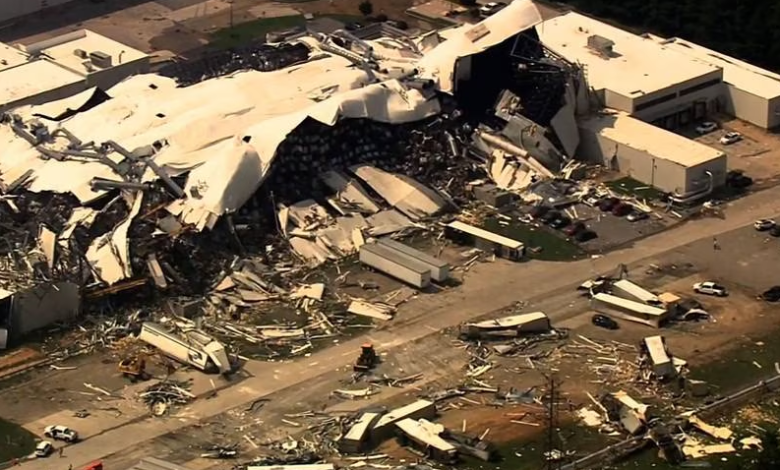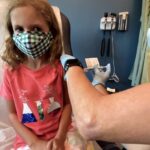Pfizer’s Plant Destroyed By EF-3 Tornado Was Making 25% of Injectables Used by Hospitals

On July 19, a monstrous EF-3 tornado ripped through Rocky Mount, North Carolina, leaving behind a path of destruction. Among the casualties was Pfizer’s critical manufacturing facility, a plant responsible for producing nearly 25 percent of the drugmaker’s sterile injectables used by hospitals across the United States. The incident caused not only significant structural damage but also dealt a devastating blow to the pharmaceutical supply chain.
The Pfizer facility stood proud, covering an expansive 1.4 million square feet, making it one of the largest sterile injectable plants globally, as proudly mentioned on Pfizer’s website. This mammoth site was not merely a hub of production; it was a lifeline for millions of patients who relied on the life-saving medications manufactured and stored within its walls. From solutions of anesthesia and analgesia to therapeutics, anti-infectives, and neuromuscular blockers, the facility churned out an astonishing 400 million products annually, sustaining countless lives.
According to local news outlets, the tornado struck with unprecedented ferocity, crushing the massive structure with its mighty winds and unleashing torrents of rain. The force of nature was unstoppable, causing extensive damage that resulted in the destruction of approximately 50,000 pallets of crucial therapies. According to video footage, the loss was catastrophic, not only in terms of the economic impact on Pfizer but also in the disruption of medical supplies to hospitals and healthcare facilities nationwide.
Amidst the chaos, there was a glimmer of hope. Despite the immense destruction, Pfizer confirmed that no workers at the plant suffered serious injuries. The company credited the swift action of its employees, who bravely followed established safety protocols and successfully evacuated the premises. The safety and well-being of their workforce were always a top priority for Pfizer, and their adherence to these protocols averted a potential tragedy.
As the dust settled and the extent of the damage became apparent, Pfizer released a statement expressing their profound concern for their colleagues, patients, and the local community. They acknowledged the challenges ahead, stating their commitment to rebuilding and getting the manufacturing plant back on its feet. While the road to recovery might be long and arduous, the pharmaceutical giant vowed to leave no stone unturned in restoring the facility and resuming production.
The aftermath of this natural disaster extends far beyond Pfizer’s financial and operational losses. Hospitals and medical professionals across the country now face potential shortages of essential medications, and patients in critical conditions may be impacted as they await crucial treatments. The pharmaceutical industry will feel the ripple effect, and Pfizer’s customers and partners will undoubtedly grapple with the consequences of the tornado’s wrath.
As news of the disaster spread, the healthcare community rallied together, offering support, solidarity, and assistance to those affected. Competing pharmaceutical companies reached out with offers of aid, demonstrating that even in times of fierce competition, the welfare of patients and public health remain paramount.
In the aftermath of this tragic event, authorities and Pfizer’s disaster response teams are working diligently to assess the full extent of the damage. Becker’s, a reputable healthcare news outlet, has requested a list of the products manufactured at the facility, which will be instrumental in understanding the implications for the pharmaceutical supply chain and planning for contingencies.
As the story unfolds, the nation holds its breath, anxiously awaiting updates on Pfizer’s recovery efforts and the timeline for resuming production. The impact of this tornado serves as a stark reminder of the vulnerability of vital industries to natural disasters. It emphasizes the need for robust disaster preparedness and contingency plans that can mitigate the impact on patients, healthcare providers, and communities at large.





